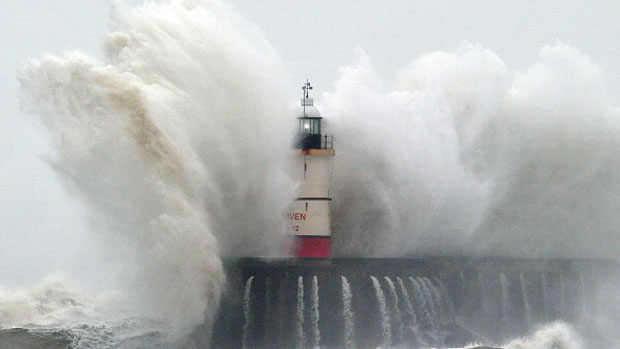
Weather bomb: the storm phenomenon brewing over britain
- Select a language for the TTS:
- UK English Female
- UK English Male
- US English Female
- US English Male
- Australian Female
- Australian Male
- Language selected: (auto detect) - EN
Play all audios:

Gale force winds and heavy rain are being reported across parts of the north west, with conditions expected to worsen as a "weather bomb" continues to develop across the north of
the UK. A Met Office amber warning is in place in parts of Scotland and Northern Ireland and yellow warnings are in place in Wales and northern England. Winds of up to 80 mph have the
potential to damage trees and cause travel disruption and power cuts, experts warn. "Exceptionally large" waves could also cause localised coastal flooding. SUBSCRIBE TO THE WEEK
Escape your echo chamber. Get the facts behind the news, plus analysis from multiple perspectives. SUBSCRIBE & SAVE SIGN UP FOR THE WEEK'S FREE NEWSLETTERS From our morning news
briefing to a weekly Good News Newsletter, get the best of The Week delivered directly to your inbox. From our morning news briefing to a weekly Good News Newsletter, get the best of The
Week delivered directly to your inbox. A Met Office spokesperson told The Guardian that "the public should be prepared for dangerous conditions, especially along causeways and coastal
roads exposed to the west." The severe conditions caused by the weather bomb are expected to last through into Thursday with a separate storm front predicted to arrive on Thursday
evening, bringing more bad weather. WHAT IS A WEATHER BOMB? Known scientifically as an explosive cyclogenesis, the phenomenon occurs when cold and warm air meet and the pressure at the
centre of the storm drops dramatically, usually by at least 24 millibars in 24 hours. The lower the pressure, the stronger the winds become. ARE WEATHER BOMBS COMMON? Weather bombs are
more ubiquitous than you might think. The term was first coined by meteorologists in the 1940s. The phrase was popularised in 1980 by Fred Sanders, an MIT professor who wrote an article in
the Monthly Weather Review. He said "bomb" was appropriate because these systems develop "with a ferocity we rarely, if ever, see over land". The UK has experienced
several weather bombs in recent years. WHERE DO THEY OCCUR MOST? These storms are known to occur in the eastern Pacific off the coast of Asia and the western Pacific. The North Atlantic is
particularly prone to weather bombs thanks to the Gulf Stream, which pits a reliable source of warm air against cold. They often lead to severe blizzards in the north-east United States,
called Nor'easters'.
